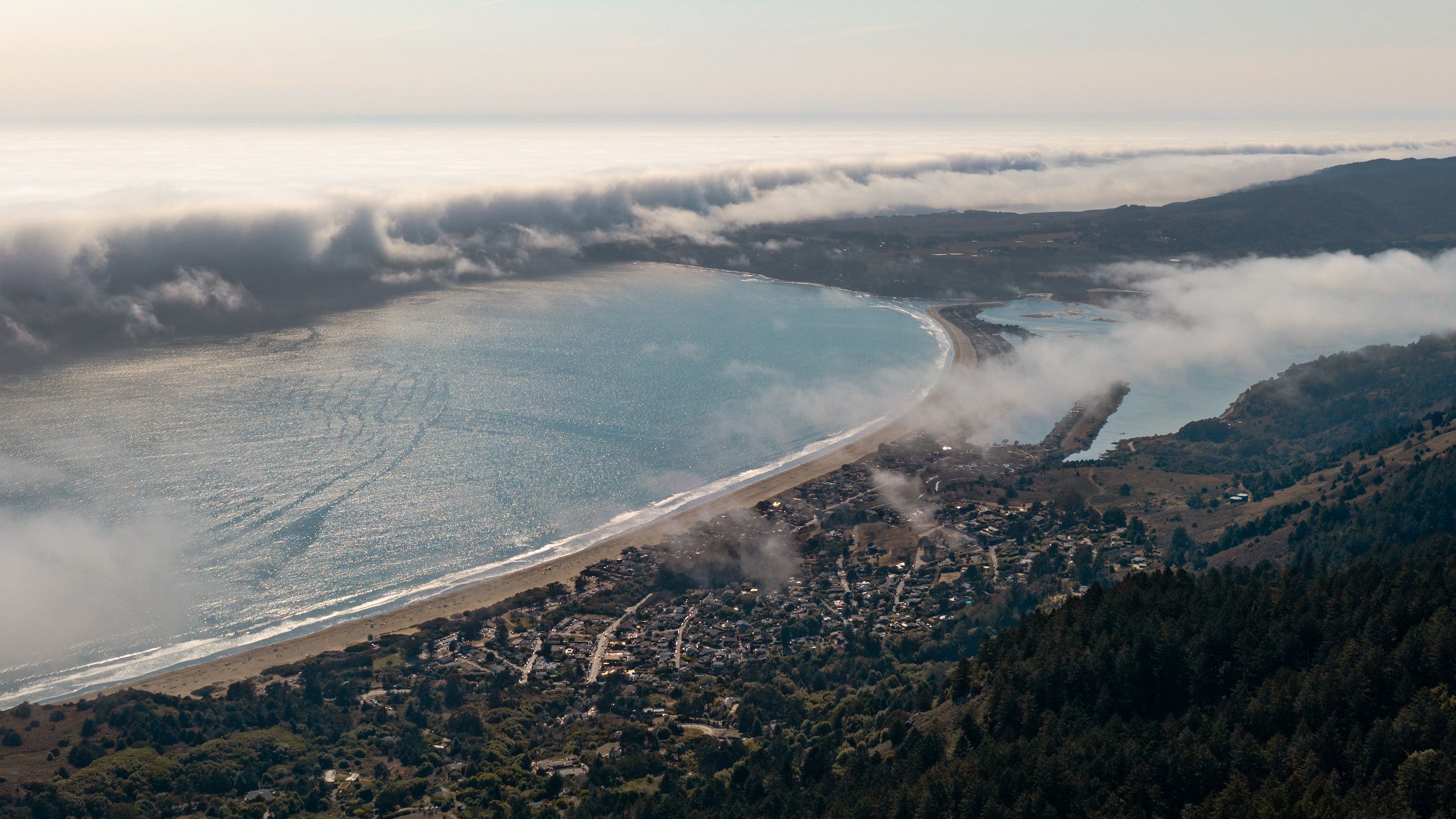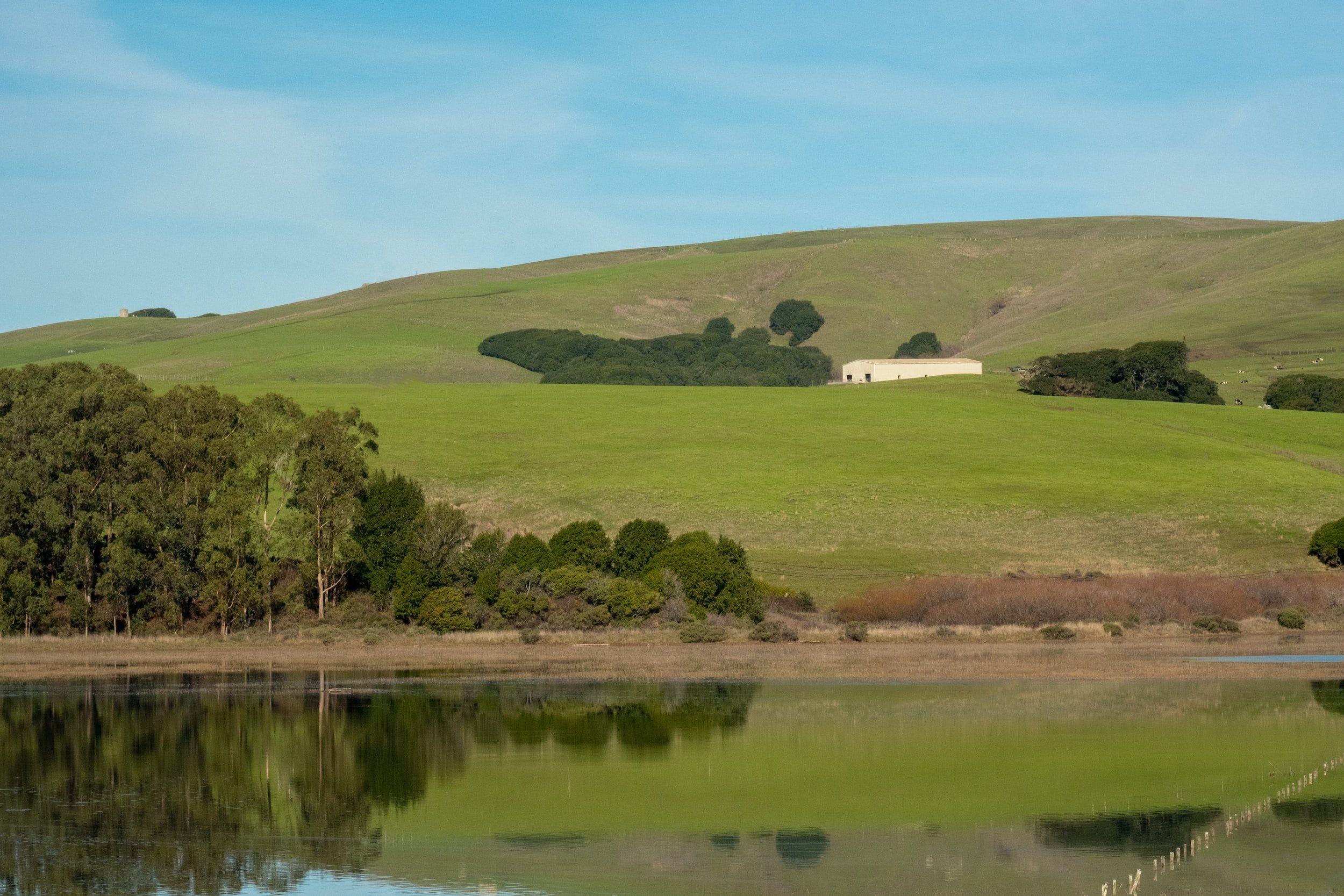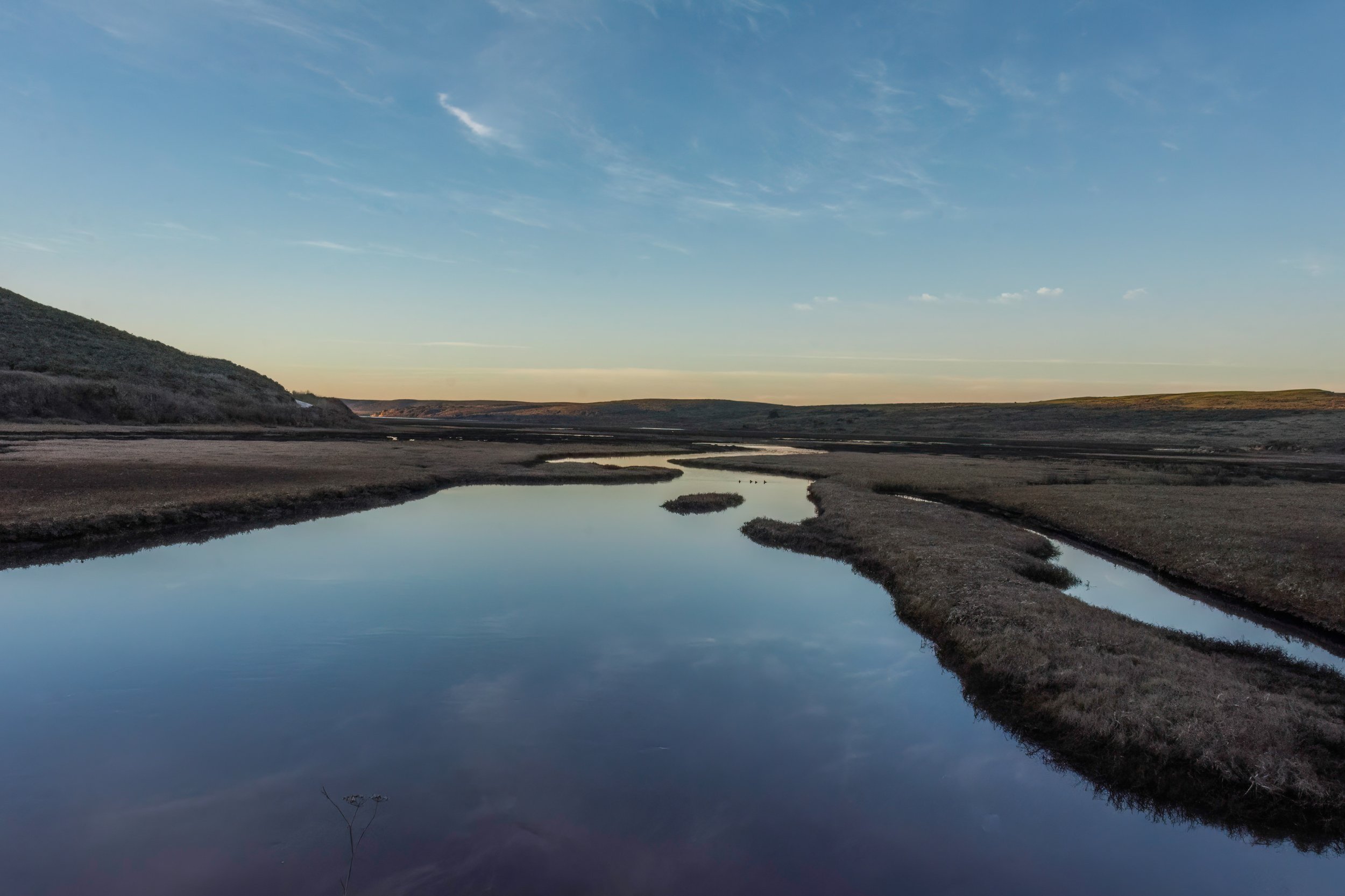As 2022 comes to an end, we reflect on the local and statewide climate work that we have engaged in, as well as some updates and opportunities for you to get involved in resilience and adaptation planning efforts. It’s critical for policymakers to hear a local perspective as we collectively decide how our communities will respond to the impacts of a changing climate.
2022 Year End Wrap Up and What to Expect in 2023
Stinson Beach
The County continues to assess and study the impending impacts of climate change related to Stinson Beach.
The Stinson Beach Nature-Based Adaptation Feasibility Study was released in 2021. The study, available online, explores three main alternatives ranging from hard armoring (like sea walls) to more nature-based options like foredunes and dune embankments with cobble berms or beach nourishment (or beach filling) and rock placement. Even though there is an appeal to nature-based solutions and these options are often preferable, the devil is in the details. Beach nourishment projects are often only short-term solutions, which are costly and require indefinite maintenance.
In 2023, vulnerability assessment information for West Marin will also be updated and the Stinson Adaptation and Resilience Collaboration (Stinson ARC) will commence with public participation options, seeking to answer questions about sea level rise challenges, grouping them into adaptation pathways to provide future resilience guidance.
Tomales Bay
In 2022, two studies were released for public review seeking to understand the impacts of rising sea levels on Tomales Bay.
The Tomales Bay Living Shorelines Project Report examines the feasibility of creating a nature-based adaptation to protect the shorelines of Tomales Bay from rising sea levels.
The Tomales Bay Bulkhead Vulnerability Assessment, reviewed the structural integrity of the bulkheads erected parallel to and near the high water mark. They found 75% of the bulkheads will overtop in extreme sea level and storm surge scenarios.
West Marin Coastal Zone, Local Coastal Program (LCP) Update
The LCP is the basic planning tool for local governments to guide development in the coastal zone. The Environmental Hazards chapter (Hazards) was not finalized by the County and we are still using hazards planning guidance from 1981!
In the coming year, we expect the Hazards chapter to be updated. We will need your help to ensure coastal resources are not rolled back in favor of protecting private property with shoreline armoring like seawalls, which cause beach loss.
Statewide Sea-Level Rise Planning
The California Coastal Commission is working with local governments and NGOs to better understand the impacts of rising sea levels throughout the state. In these workshops, it is important to advocate on behalf of our coastal resources, as the protection of private property has a strong lobby.
We will continue to push for nature-based solutions rather than shoreline armoring in the future, as we will be participating in a workshop focused on neighborhood-scale approaches in January.
Advocating for Blue Carbon
As California and local jurisdictions engage in climate adaptation planning, we are finding the benefits of blue carbon are often overlooked. At every opportunity, we raise the importance of blue carbon, including commenting to the California Air Resources Board to include blue carbon and coastal wetlands in its scoping plan.
-
Blue carbon refers to the capture and storage (sequestration) of carbon in the world’s ocean and coastal ecosystems. Here in California, we have destroyed more than 80% of our wetlands. Wetlands and coastal ecosystems have great potential to capture and store carbon through algae, seagrasses, salt marshes, and other plants with a 10x greater sequestration rate than terrestrial forests! Restoring and protecting our wetlands and coastal ecosystems are critical priorities for our future.on text goes here
Our Coastal Climate Online Series
The climate crisis presents an immediate need for action. Addressing the environmental hazards associated with the impacts of a changing climate while building community resilience for Marin’s coastal communities is at the forefront of our work.
These are complicated issues and there is a need for additional public outreach and education for our communities as we collectively make decisions that have lasting impacts for a generation.
In 2020 and 2021, we hosted two webinars about sea-level rise and adaptation planning. If you missed these talks and are interested in learning more about the challenges our coastal communities are facing, check them out today.
Our work on climate change is ongoing. You can count on us to hold our leaders accountable to develop strong, innovative, and collaborative climate policies for our coastal communities; prioritize public access and sensitive habitat protection, and keep our community informed on studies and participation opportunities. We will advocate for use of the best available science, precautionary principles, equitable solutions, and the need to prioritize biodiversity and coastal resources.







